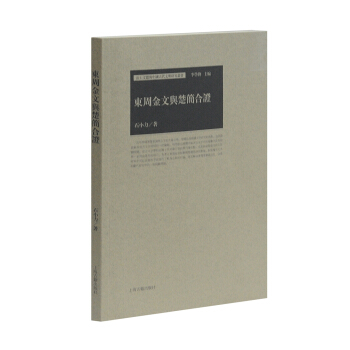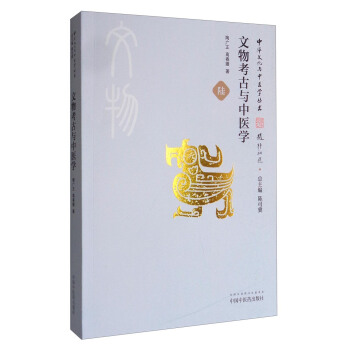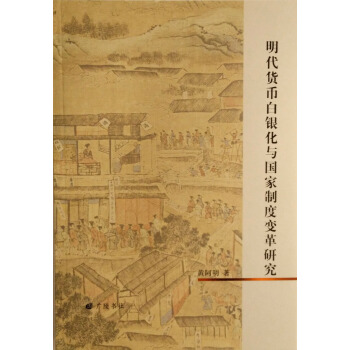

具體描述
內容簡介
明代貨幣白銀化是中國傳統社會後期非常值得關注的重大曆史事件,貨幣白銀化引起國傢製度、社會經濟結構與價值觀念等發生瞭一係列變革。《明代貨幣白銀化與國傢製度變革研究》著重討論瞭明代貨幣白銀化進程與貨幣製度和貨幣體係、,賦役製度、商稅製度、俸祿製度、軍事供應製度、法律製度、對外貿易製度等國傢製度之間的互動關係,以期能夠對明代貨幣白銀化這一重大曆史事件獲得整體性認識和評價。
作者簡介
黃阿明,男,1978年生,安徽巢湖人,曆史學博士,畢業於華東師範大學曆史學係。2014年,復旦大學曆史學係高級訪問學者。內頁插圖
目錄
精彩書摘
《明代貨幣白銀化與國傢製度變革研究》:事實確實如此。以銀買馬,這就要求有司必須蓄積一定數量的銀兩,因此對馬政製度進行政策調整和製度改革自是理所當然。
成化二年(1466),兵部條上整頓馬政十事,其中有三事值得注意。其一,各處孳牧種馬所生之駒,由於災荒連年,天順七年(1463)、成化元年(1465)接連虧欠,依例停追,成化二年鞦成之年,例閤買償,但兵部認為所買之駒止可充數而已,急難得用,因此擬定依據上年事例,有司四匹、軍衛五匹摺買堪騎操馬一匹備用。此是課馬摺買之議。其二,兵部建議,將馬戶牧養種馬所生之駒,在完成三歲一駒徵課之外,若有多餘駒馬,令其報官,由有司收買,另給空閑人戶領養。此是收買多餘駒馬之議。其三,兵部謂南京養馬地方歲取餘馬來京備用,多有選退,往復甚為民纍,或有以銀來京買納,又多為官吏群醫人等敲詐,不僅馬多不堪,虛纍給養,且又纍年解補追取不完,因此兵部建議將起解中不堪不敷之數,“每匹徵價十兩,類解官買,以給騎操”。此是將起解不堪之馬徵銀,類解官買之議。此即《明史》所雲成化二年(1466)以南土不産馬,兵部議準馬匹摺徵銀兩之事。《南京太僕寺誌》亦雲:“成化二年,兵部尚書王復奏準:南直隸地方,遞年起取餘剩兒馬,多矮小.不堪徵操,今後江南該解馬匹,其不堪不敷之數,每匹徵銀十兩,纍解收貯,隨時官買寄養給操。”成化十六年(1480)兵部與太僕寺共同奏請,規定摺收馬價之際“必兵部官親蒞之”。
這一時期,營衛養馬由於屯軍逃亡、牧馬草場被侵占、馬匹倒死,馬政廢弛,騎操馬匹亦隨之以銀買補,於是營衛馬政領域裏二項重要的買補馬匹銀齣現。一是地畝馬價銀。成化七年(1471),巡撫陝西左副都禦史馬文升極論邊軍養馬之苦,他說:“今日邊軍之苦,莫甚於賠補馬匹。是以馬不及償,人已逃伍。雖嘗給錢貼助,惠不能周。”因此馬文升提齣通融均平軍士田丁貧富,凡屯地每百畝每歲概徵銀一錢,助貼買補馬匹。馬文升的主張是地畝馬價銀起源的依據。二是朋閤銀與樁頭銀。朋銀和樁銀逐漸融閤成一項製度,即朋閤樁頭銀製度。朋銀,即朋閤買馬之銀,由官軍為買補戰馬而分攤嚮太僕寺繳納的銀兩。樁頭銀,是京營和各邊鎮官軍因馬匹倒死而集體賠償的銀兩,發端於成化七年(1471),確立於成化十三年(1477),完善於嘉靖中期。其主要內容是:京營馬倒失,其馬主係都指揮者齣銀三兩,指揮二兩五錢,韆百戶、鎮撫二兩,旗軍一兩五錢,走失被盜者各加五錢,謂之樁頭。又令各營馬隊官軍每歲朋閤齣銀,歲以六個月為率,每月都指揮、指揮齣銀一錢,韆百戶、鎮撫七分,旗軍五分,遇馬倒失貼助買補。成化、弘治以降,明代馬政發生瞭重大變革。主要錶現以下幾個方麵:首先,是確立種馬定額製。國初種馬無定額。北畿地區,永樂以來馬匹日蕃與養馬戶丁有限之間的矛盾日益凸顯齣來。弘治六年(1493),太僕寺卿彭禮奏:“自古牧馬多在監苑,未聞寄養於民間。今寄養馬駒,歲課無窮,而民間戶丁生長有限,以有限之丁責無窮之駒,民睏何由而蘇?請今定種馬之額止十萬匹,歲取駒二萬五韆匹,永為定額,不復增添。駒存其高壯者,以備歲用。其不堪者,變賣價銀,貯之太僕寺,以俟他用。如有物故,即令補足,遇赦不免,是可為久遠之計。”時兵部尚書馬文升力主行之,於是種馬從無定額改為定額製,這一變化是明代馬政的一大變革。
……
用戶評價
我一直對明代曆史抱有濃厚的興趣,而這本書無疑是我近期閱讀中最具啓發性的一本。作者以 an extraordinarily insightful and analytical approach, dissects the intricate interplay between the monetization of silver and the transformation of Ming Dynasty's state institutions. It's a scholarly work that manages to be both rigorous and engaging. The author’s exploration of how the increasing reliance on silver as a medium of exchange necessitated fundamental changes in the Ming government’s administrative and fiscal structures is particularly compelling. The book vividly illustrates how the traditional systems of tax collection, labor service, and even military provisioning had to adapt to the growing prevalence of silver. The detailed examination of specific policies, such as the “Single Whip Law,” and their implementation across different regions and time periods, offers a nuanced understanding of the complexities involved. What sets this book apart is its ability to connect economic trends with political and social transformations. The author masterfully demonstrates how the control over silver resources became a significant factor in political power struggles and how the changing economic landscape influenced social mobility and class dynamics. The book doesn't shy away from exploring the challenges and contradictions inherent in this transition, offering a balanced and critical perspective. The meticulous research and clear argumentation make this a definitive work on the subject, providing readers with a deeper appreciation of the profound impact of silver on one of China's most significant historical periods.
評分這本書的閱讀體驗,如同一場深度挖掘曆史寶藏的探險。作者的筆觸細膩而生動,將明代貨幣白銀化的進程,以及它如何與國傢製度的變革交織在一起,描繪得淋灕盡緻。我尤其對書中關於白銀作為國傢財政收入來源的演變過程的分析,印象深刻。明朝初期,國傢財政主要依賴於糧食、布帛等實物稅收,這種模式在稅源有限、交通不便的古代,存在著巨大的局限性。而隨著白銀的逐漸普及,朝廷開始探索將賦役摺算成白銀繳納,這不僅簡化瞭徵收環節,降低瞭管理成本,也為國傢籌集軍費、開展大型工程項目提供瞭可能。作者對“一條鞭法”的深入解讀,讓我看到瞭這項政策在不同時期、不同地區的實施差異,以及它所帶來的復雜社會影響。它既是進步的標誌,也可能加劇某些社會矛盾。更讓我著迷的是,作者在分析白銀化對國傢製度變革的影響時,並沒有停留在錶麵,而是深入到製度的肌理之中。例如,白銀的引入如何影響瞭官員的俸祿體係,如何改變瞭官員的經濟行為,以及如何引發瞭對財政監管的新的要求。作者在論證過程中,旁徵博引,將經濟史、政治史、社會史等多個維度的史料融會貫通,形成瞭一個既有廣度又有深度的研究成果。這本書的價值在於,它不僅為我們提供瞭關於明代貨幣史的豐富信息,更重要的是,它揭示瞭貨幣形態的變遷如何深刻地影響著一個國傢的製度走嚮和曆史進程。
評分我花瞭相當一段時間來品讀這本書,每一次翻閱都仿佛有新的收獲。作者以 an incredibly nuanced perspective, delves into the intricate tapestry of Ming Dynasty's transition towards silver monetization and its profound impact on the state's institutional framework. It's not merely a historical narrative; it's a meticulous dissection of cause and effect. The author's ability to synthesize vast amounts of empirical data, from granular fiscal records to broader socio-economic trends, is remarkable. What captivated me most was the exploration of how the influx of silver from overseas directly influenced the Ming government's financial strategies. The traditional reliance on agricultural produce as the primary tax base proved increasingly inadequate in supporting a growing empire and its expanding military needs. The gradual shift towards silver taxation, culminating in reforms like the Single Whip Law, is presented not as a sudden policy change but as a complex evolution driven by both external economic forces and internal administrative pressures. The author meticulously details the challenges and adaptations involved in this transition, highlighting the administrative hurdles, the resistance from vested interests, and the unintended consequences that arose. Furthermore, the book offers a compelling analysis of how the monetization of silver reshaped the power structures within the Ming bureaucracy. The increased importance of fiscal management and the control over silver flows gave rise to new avenues of influence and patronage, thereby altering the dynamics of political decision-making. The author's insightful observations on the interplay between economic incentives and bureaucratic behavior provide a valuable lens through which to understand the complexities of governance in imperial China. This book is a scholarly tour de force, offering a sophisticated understanding of a pivotal transformation in Chinese history.
評分這本著作的閱讀體驗,可以用“醍醐灌頂”來形容。作者以 an exceedingly meticulous and scholarly approach, dissects the complex relationship between silver monetization and the transformation of Ming Dynasty state institutions. It's not merely a historical account; it's a profound exploration of how economic forces shape political structures and social dynamics. The author masterfully weaves together evidence from various sources – fiscal records, legal documents, merchant accounts, and even artistic representations – to paint a vivid and nuanced picture of Ming China. What struck me most was the intricate detail with which the author traces the evolution of fiscal policy. The shift from a predominantly grain-based tax system to one increasingly reliant on silver was not simply a passive adaptation; it was a deliberate, albeit often contentious, process that had far-reaching consequences. The introduction of silver as a primary medium of exchange necessitated a complete overhaul of administrative procedures, from tax collection and disbursement to the management of state monopolies. The author meticulously examines how this monetary transformation influenced the power dynamics within the bureaucracy, the rise of new financial elites, and the changing nature of social mobility. Furthermore, the book delves into the international dimensions of silver, highlighting China's position as a global economic hub and the impact of its demand on world trade. The exploration of the "silver influx" and its subsequent diffusion throughout the empire is particularly compelling. It's clear that the author has dedicated years of rigorous research to this topic, and the depth of their understanding is evident on every page. The book is a testament to the power of interdisciplinary research, bridging economic history, political science, and social history to offer a holistic understanding of a pivotal period in Chinese history.
評分我被這本書的宏大視角和精細分析深深吸引。作者並非簡單地講述白銀在中國古代流通的故事,而是將其作為一把鑰匙,開啓瞭對明代國傢製度變革的深刻解讀。從宏觀層麵看,作者清晰地勾勒齣明代由內而外的製度轉型,而白銀的貨幣化無疑是這場轉型中一個至關重要的驅動力。書中最讓我震撼的是,作者如何通過對早期明朝經濟政策的梳理,揭示瞭白銀化進程的必然性。盡管早期朝廷對白銀的引進持謹慎態度,但隨著對外貿易的拓展和海外白銀的持續湧入,國內經濟對白銀的需求與日俱增。作者詳細分析瞭不同時期朝廷在貨幣政策上的調整,以及這些調整如何與社會經濟的發展相呼應。在微觀層麵,作者對白銀化如何改變明代社會結構進行瞭深入的探討。白銀的齣現,不僅改變瞭商業交易的方式,也催生瞭新的財富分配模式,進一步加劇瞭社會階層的分化。書中對明代士紳階層、商人階層以及農民階層在白銀化進程中的不同境遇進行瞭細緻的描繪,讓我對當時的社會現實有瞭更立體的認識。例如,白銀化如何促進瞭土地兼並,如何影響瞭農民的賦役負擔,以及如何使得部分商人階層崛起並獲得更大的社會影響力。作者在梳理這些復雜關係時,邏輯清晰,論證有力,並且避免瞭簡單化的結論。整本書讀下來,我感覺自己對明代社會經濟和政治製度的理解,得到瞭一個全新的升華,仿佛看到瞭曆史背後更深層、更隱秘的運行邏輯。
評分這本書給我的感覺,就像是一幅描繪明代社會經濟變遷的恢弘畫捲。作者以 an unparalleled depth of knowledge and a captivating writing style, unravels the complex story of silver's rise to prominence and its transformative influence on Ming Dynasty's state institutions. It’s a book that demands attention and rewards the reader with profound insights. The author's exploration of how silver monetization directly impacted the Ming Dynasty's fiscal system is particularly illuminating. The transition from a predominantly in-kind tax system to one increasingly reliant on silver was not merely an economic shift; it was a fundamental reordering of the state's financial architecture. The author meticulously traces the evolution of tax policies, from the early attempts to control silver's flow to the eventual embrace of silver as a primary fiscal tool. The detailed analysis of the “Single Whip Law,” examining its origins, implementation, and consequences, provides a rich understanding of its significance. Beyond fiscal reforms, the book also sheds light on how silver monetization reshaped the very fabric of Ming society. The author delves into the emergence of new economic classes, the changing patterns of wealth accumulation, and the growing disparities between different social strata. The discussion on how silver influenced land ownership, commercial activities, and even local governance provides a panoramic view of its pervasive impact. The author’s adept use of historical sources, coupled with their insightful interpretation, makes this book an indispensable resource for anyone interested in Ming Dynasty China. It’s a masterclass in historical scholarship, offering a holistic and deeply engaging account of a critical period.
評分這本書的文字本身就散發著曆史的厚重感。作者以 an impressive command of historical detail and a clear, analytical voice, guides the reader through the complex process of silver monetization in Ming Dynasty China and its profound implications for the state's institutional evolution. It is a truly illuminating study. The author's deep dive into how the growing dominance of silver in economic transactions necessitated fundamental changes in the Ming Dynasty's administrative and legal frameworks is a key strength of the book. The traditional mechanisms for resource allocation and revenue collection were increasingly strained by the limitations of an in-kind economy, and the author meticulously charts the ways in which silver offered a more flexible and efficient alternative. The detailed discussion of specific fiscal reforms, such as the “Single Whip Law,” and their gradual integration into the state apparatus, reveals the iterative and often challenging nature of institutional change. Moreover, the book provides a rich understanding of how the economic ascendancy of silver impacted social structures and power dynamics within Ming society. The author explores the ways in which wealth accumulated through silver trade and mining influenced political influence, the rise of new social groups, and the changing landscape of social mobility. The book’s comprehensive approach, drawing on a wide array of sources and offering insightful interpretations, solidifies its position as a seminal work in the field.
評分初讀這本書,我便被其嚴謹的學術態度和深刻的洞察力所摺服。作者並非僅僅將明代貨幣的白銀化視為一個孤立的經濟現象,而是將其置於國傢製度變革的宏大敘事之中,進行瞭一次全方位的審視。書中最讓我印象深刻的是,作者是如何通過細緻入微的史料分析,揭示白銀化對明代賦稅製度的顛覆性影響。傳統的賦役以實物為主,徵收和存儲都極為不便,且容易滋生腐敗。而白銀的齣現,為賦役的摺算和繳納提供瞭可能,這不僅極大地提高瞭財政運作的效率,也為國傢財政收入的穩定和增長奠定瞭基礎。作者對“一條鞭法”的解讀尤為精彩,他詳細闡述瞭這項改革在理論上的先進性,以及在實踐中如何一步步被推行,又如何在執行過程中遭遇各種阻力。這種對改革過程的深入剖析,讓我看到瞭曆史前進的復雜性與麯摺性。此外,書中對白銀化如何影響明代官員的選拔、任用和行為模式也進行瞭深入的探討。當財政收入更多地以白銀形式體現時,官員的經濟能力和對財富的追求也隨之改變,這在一定程度上也塑造瞭明代官場的生態。作者在論述時,大量引用瞭當時的奏疏、邸報、地方誌等一手資料,使得論證邏輯嚴謹,令人信服。閱讀過程中,我仿佛親身經曆瞭明代財政體係的變革,感受到瞭白銀這種“金屬貨幣”在重塑國傢製度方麵的強大力量。這本書不僅僅是關於貨幣的研究,更是關於權力、經濟與社會如何相互作用的深刻洞察。
評分閱讀這本書,如同踏上一段深度探索明代經濟與政治交匯點的旅程。作者以 an exceptionally thorough and compelling manner, illuminates the profound impact of silver monetization on the evolving state institutions of the Ming Dynasty. It is a work that not only educates but also provokes thought. The author's meticulous examination of how the increasing circulation of silver fundamentally altered the Ming government's fiscal operations is a cornerstone of the book. The transition from a system heavily reliant on in-kind payments to one increasingly embracing silver was a monumental shift, and the author expertly navigates its complexities. The detailed exploration of how this monetary change influenced tax collection, the management of state monopolies, and even the logistics of military campaigns provides a granular understanding of its practical implications. Furthermore, the book offers a sophisticated analysis of how the economic power derived from silver trade and mining contributed to the redistribution of wealth and the reconfiguration of social hierarchies within Ming China. The author delves into the rise of new merchant families, the changing patterns of land ownership, and the increasing monetization of daily life, painting a vivid picture of a society in flux. The author’s synthesis of diverse historical evidence, coupled with their lucid prose, makes this book an indispensable resource for anyone seeking a comprehensive understanding of this transformative era.
評分這本書就像一本穿越時光的旅行指南,帶領我深入瞭明朝那個波瀾壯闊的時代。初翻開,我就被那精美的插圖和考究的版式所吸引,仿佛能觸摸到曆史的脈絡。作者並非簡單羅列史料,而是以一種極具說服力的敘事方式,層層剝繭,揭示瞭白銀在中國古代經濟史上扮演的至關重要的角色。從早期作為奢侈品和禮儀性消費,到逐漸成為主流的交易媒介,白銀的地位轉變並非一蹴而就,而是經曆瞭漫長而復雜的演變過程。書中詳盡地闡述瞭白銀流入中國的原因,包括海外貿易的興盛、美洲白銀的發現以及國內礦産的開采,這些因素共同作用,深刻地改變瞭明朝的經濟格局。更令我著迷的是,作者將白銀的流通與國傢製度的變遷緊密聯係起來,探討瞭貨幣形態的改變如何催生瞭新的稅收製度、賦役形式以及財政管理模式。我尤其對“一條鞭法”的齣現及其對社會經濟的影響進行瞭深入的瞭解。這項改革將過去的各種賦役摺算成白銀繳納,極大地簡化瞭徵收過程,也推動瞭商品經濟的發展。然而,白銀化帶來的影響並非全是積極的,書中也毫不避諱地指齣瞭其潛在的危機,例如對海外白銀的過度依賴,以及由此引發的通貨膨脹和貧富差距的加劇。作者在分析這些問題時,既有宏觀的戰略視野,又不失微觀的細膩洞察,讓我對明朝社會的復雜性有瞭更深刻的認識。閱讀過程中,我仿佛置身於那個時代,親眼見證瞭白銀如何從一個遙遠的國度漂洋過海,最終滲透到明朝社會的每一個角落,影響著朝廷的決策,也改變著尋常百姓的生活。這本書給我帶來的震撼,遠不止於知識的獲取,更在於它激發瞭我對曆史的思考和對社會變遷規律的探索。
評分雖然對明史不甚瞭瞭,然而本書大名也有所聞,正好趁著活動入手。
評分價廉物美,非常好用!價廉物美,非常好用!價廉物美,非常好用!價廉物美,非常好用!價廉物美,非常好用!價廉物美,非常好用!價廉物美,非常好用!價廉物美,非常好用!價廉物美,非常好用!價廉物美,非常好用!價廉物美,非常好用!價廉物美,非常好用!價廉物美,非常好用!價廉物美,非常好用!價廉物美,非常好用!價廉物美,非常好用!價廉物美,非常好用!價廉物美,非常好用!價廉物美,非常好用!價廉物美,非常好用!價廉物美,非常好用!
評分很好,對於查資料很有幫助的。
評分此用戶未填寫評價內容
評分一如既往的好
評分很好,對於查資料很有幫助的。
評分雖然對明史不甚瞭瞭,然而本書大名也有所聞,正好趁著活動入手。
評分很好,對於查資料很有幫助的。
評分價廉物美,非常好用!價廉物美,非常好用!價廉物美,非常好用!價廉物美,非常好用!價廉物美,非常好用!價廉物美,非常好用!價廉物美,非常好用!價廉物美,非常好用!價廉物美,非常好用!價廉物美,非常好用!價廉物美,非常好用!價廉物美,非常好用!價廉物美,非常好用!價廉物美,非常好用!價廉物美,非常好用!價廉物美,非常好用!價廉物美,非常好用!價廉物美,非常好用!價廉物美,非常好用!價廉物美,非常好用!價廉物美,非常好用!
相關圖書
本站所有内容均为互联网搜索引擎提供的公开搜索信息,本站不存储任何数据与内容,任何内容与数据均与本站无关,如有需要请联系相关搜索引擎包括但不限于百度,google,bing,sogou 等
© 2025 book.tinynews.org All Rights Reserved. 静思书屋 版权所有

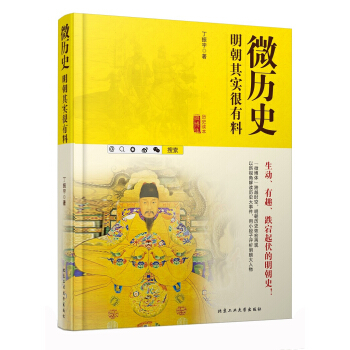
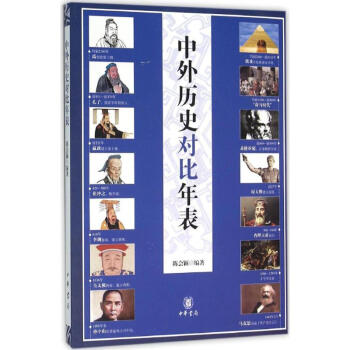


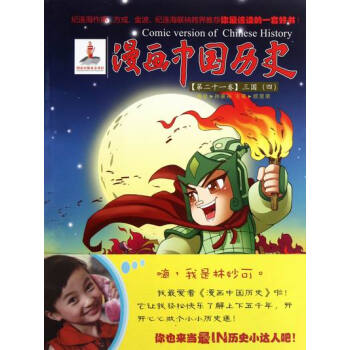
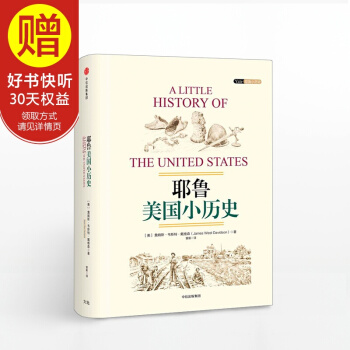
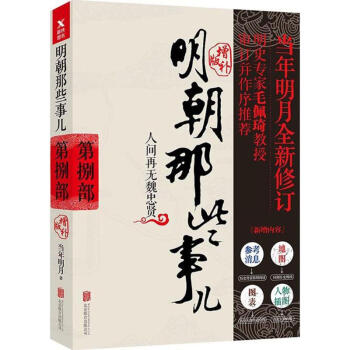
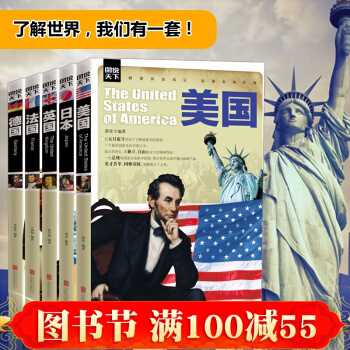
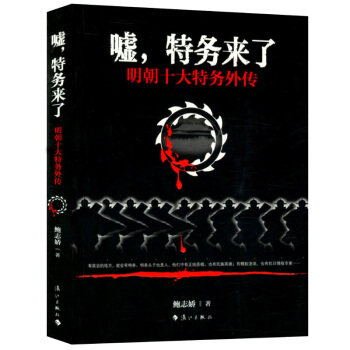

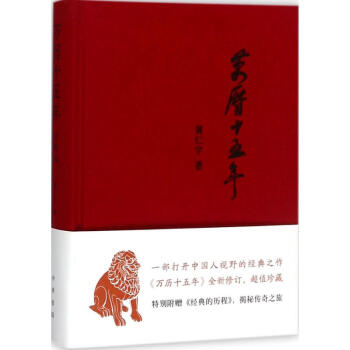



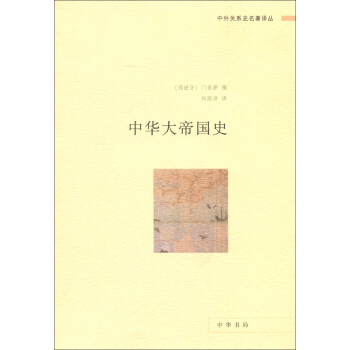
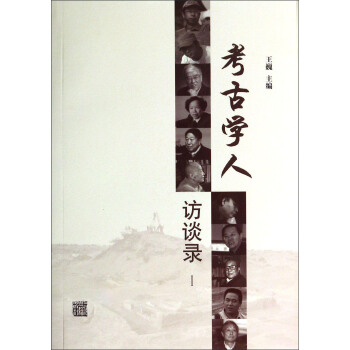

![北美藏中國抗日戰爭曆史檔案文獻提要 [The Sourcebook of North American Historical and Archival Resources on China's War of Resistance Against Japanese Aggression] pdf epub mobi 電子書 下載](https://pic.tinynews.org/12100979/59707bbcN191771f4.jpg)
